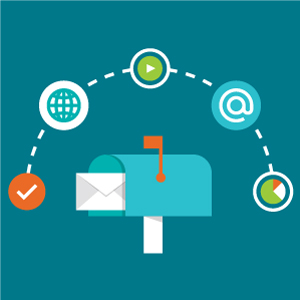 With every year, your customer has more and more options for their marketing campaigns. Email, print ads, television ads, digital ads, and direct mail all compete for their time and budgets. However, direct mail is an essential tool for their marketing campaigns, and the statistics prove it. Here are five direct mail statistics that your customers should know!
With every year, your customer has more and more options for their marketing campaigns. Email, print ads, television ads, digital ads, and direct mail all compete for their time and budgets. However, direct mail is an essential tool for their marketing campaigns, and the statistics prove it. Here are five direct mail statistics that your customers should know!
1. 90% of Millennials Think Direct Mail Advertising is Reliable
Millennials might be a digital generation, but they definitely value the information they receive in the mail! Not only do 90% of them think that direct mail advertising is reliable, more than half of consumers in this age group have made purchases based on direct mail offers. 50% of millennials surveyed also ignore digital ads, compared to only 15% of millennials saying they ignore direct mail. You can learn more about how this age group responds to print in this whitepaper from the US Postal Service.
2. Adding a Person’s Name and Full Color in Direct Mail Can Increase Response By 135%
According to Canon Solutions America, personalization and color can make a huge impact on the effectiveness of a campaign. And no wonder—we all love the feeling of receiving a personalized piece, and full color print can help your customer’s postcard catch consumer attention among plain white envelopes.
3. Direct Mail With Digital Ads Yield 28% Higher Conversion Rate
Direct mail pieces don’t have to work on their own—in fact, according to NonProfit PRO, when your customer pairs their digital ads with direct mail, both are more effective! This makes direct mail and digital ads a great team, and it also makes a direct mail piece an important way to boost the effectiveness of your customer’s digital ad.
4. 18.4% of Former Customers Respond to Direct Mail
If your customers are looking for a way to bring back customers who haven’t done business with them in some time, direct mail is a great way to get them to respond. According to the US Postal Service, direct mail will bring nearly 1/5 of former customers back to give your customer’s business another look.
5. Oversized Envelopes Attract 6.6% of Household Responses
According to the DMA, oversized envelopes have the greatest household response rates over other mediums. Their impressive 6.6% of household responses is followed by postcards at 5.7% and letter-sized envelopes at 4.3%.
Are your customers ready to start building their direct mail campaign? We’re here to help. With a wide variety of postcards available and more arriving soon, your customer can create an extraordinary direct mail piece that is sure to gain attention in the mailbox. Click here to explore the selection of postcards available online, or check out our catalog for more information.
Were any of these statistics a surprise to you? Do you think there are any statistics that we missed? We’d love to see you join the conversation in the comments below.